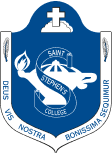Embracing technology in our learning environment is crucial in preparing students for the world beyond the classroom. Through Years 7 to 12, most of the curriculum is delivered via our Learning Management System (LMS). The Desire to Learn (D2L) Brightspace provides students with access to many informative resources at any time and from anywhere, including during class, after school and on weekends. This ubiquitous access to content is crucial for our personalised learning philosophy. Students can learn in an asynchronous way to fit in with their lifestyle and other pursuits such as TAFE and VET courses, sport training and competition and other commitments that life presents. Our students embrace the technology and eLearning programs implemented throughout the College, incorporating them as a normal part of every day and thereby establishing them at the forefront of technology adaptation for their generation. Our eLearning program has been designed to prepare students for a dynamic, digitally based future and has gained both national and global recognition.
Academic Learning embracing technology
Our technology-enhanced learning approach amalgamates the best aspects of technology with best practice in teaching. The academic courses offered at Saint Stephen’s College infuse modern technology into curricular fundamentals. Our fast and reliable network incorporates state-of-the-art infrastructure and a whole-of-campus, latest generation wireless network with safe high-speed internet access. Teaching areas have digital projectors with wireless laptop projection and the very best touchscreen Windows 10 computers, enabling teachers to make use of digital inking and to circulate within the classroom while wirelessly projecting to the screen.
An iPad program operates in Prep to Year 2 and a class set of shared laptops is provided in Years 3 and Year 4. A Bring Your Own Laptop (BYOL) program operates for students from Years 5 to 12. There are also four desktop computer laboratories providing more powerful computers for high intensity subjects. Our future-focused education philosophy also incorporates emerging technologies such as Augmented and Virtual Reality, 3D Printing and Robotics.
BYOL
All students in Years 5 to 12 require a laptop computer. Computers can be purchased through the College JB HIFI portal www.jbeducation.com.au/byod. School Code: SSCBYOD2024),or independently, if preferred. Parents can check suitability of devices by contacting the eLearning team at the College.
Devices must meet the minimum specifications including, a Pen-Based device with a front and rear facing camera. We highly recommend that parents purchase 3 years of warranty and 3 years of accidental damage insurance with all new devices. There has been significant research outlining the use of a modern digital pen as the best option to support the way that we think and learn and the educational and cognitive support for this is significant.
Saint Stephen’s uses a Windows 11 laptop environment. The College has educational licensing for Microsoft Office, which is free for all students to download. The download and installation of this software is done at the College under the supervision of the eLearning Department and classroom teachers and students are expected to update their device when prompted. New students will be guided through the setup of a new laptop when they commence at the College. Saint Stephen’s College works closely with parents to support students in developing safe online behaviours. We encourage students to build a positive digital image and ensure they are responsible digital citizens.
Virtual Learning
The goal at Saint Stephen’s College is to use technology to enhance teaching and learning. One way we do this is through the Lightboard. Teachers use the Lightboard to create tutorials which are placed into the online learning environment so that students can use them for revision, working ahead and supplementing learning 24 hours a day, seven days a week, from any location. The Lightboard provides a ‘human’ experience with the teacher’s gestures and expressions visible. These videos replicate a teacher- directed lesson in the classroom, with more dynamic content and the ease of functionality that allows students to replay the content to reinforce their understanding of critical concepts.
Virtual Reality (VR) and Augmented Reality (AR)
VR is the next best thing to being there. When students enter the immersive world of virtual reality via one of our 14 Oculus headsets, they can be a part of micro and macro worlds. In Science that includes a guided, interactive tour of the Human Body or Space. In Humanities, students can view 360° videos of the places that they are studying.
It is one thing to consume content, but our aim is for our students to become proficient in creating content. Using tools like CoSpaces, our students are creating games and virtual presentations that can be viewed on VR headsets. The content is enhanced through coding, so that objects can interact with each other and be triggered by the user. In Digital Solutions, students are creating interactive 3D worlds in cross-curricular projects which they can explore in virtual reality.
Our AR Sandpit gives new meaning to the term “playing in the sandpit”. Complex geographical modelling can be done instantly, creating mountains, valleys, seas and more. Virtual rain or an erupting volcano can be created with the movement of a hand thanks to the power of high-tech sensors. Contours on landscapes are projected onto the shapes, and heights are indicated through different colours. This amazing technology is available to our students and amazes all who use it.
3D Science
At Saint Stephen’s, we employ 3D Science to help students develop a better understanding of how systems work. Getting a real insight into things such as cells and body systems is difficult. Pictures in textbooks are flat and unrealistic but traditionally have been one of the few options available. Our large-screen 3D television runs 3D software which students can view by wearing special glasses. This allows them to ‘look inside’ body cells, a beating heart and other organs. The whole class can get a more realistic picture of how systems really work, which generates class discussion and leads to a greater working understanding of the concepts being taught.

